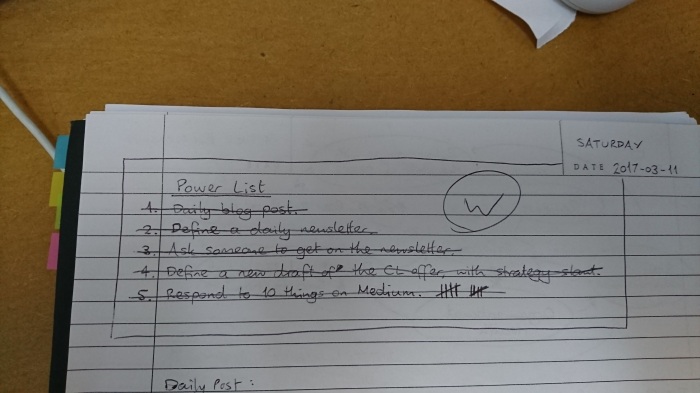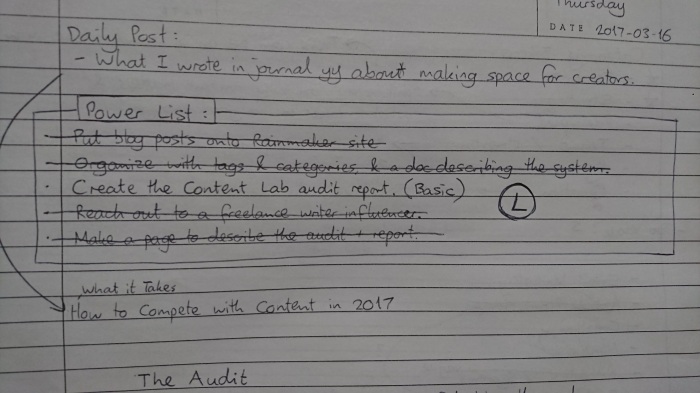I have been sloppy with money measurement. I’ll explain why after I let Dan Kennedy explain why this failing is so fatal:
Clipped – 15:37 to 17:47
“Most chequebook ledgers just track the balance. That’s probably what yours tells you.
“Every time I look at my chequebook, there’s a constant tracking of where I am in relationship to the amount of cash I want to have on hand by the end of the year.
“Total cash assets.
“So there’s a continual list that I’m continually updating of what’s in this account, what’s in that account, what’s sitting over hear in this, what’s sitting over here in that, what’s due to me, and what that total is in relationship to what the total’s supposed to be on December 31st.
“So I’m down “X” dollars. How much ground have I made up in the last 30 days? Where am I in ratio?
“You could go through [my ledger]… if you went back enough years you could see the progression against the first million, you could see the progression against the second million, you could see the progression against the third million, you could see the sudden disappearance, you could see the progression again.
“I track that daily. I want to know how many hundreds of thousands of dollars I am away from the number I’m supposed to hit by the end of the year, and I want to know if I’m making up ground, or if I’m not making up ground. Do I need to make up ground, or can I coast?…
“The more ways you measure, the more frequently you measure… any athletic coach will tell you, and most athletes will tell you, absent any other changes, measurement improves performance. Absent any other changes. No change in diet, no change in conditioning, no change in training, no change in anything. Measure the performance more, performance improves. Well, we’re dealing with performance here – our own.”
There is a lot of guilt wrapped up in money for a lot of us. I know it’s true for me.
My guilt not only prevents me from asking for money (“taking money from others“), it also prevents me from even looking at it all that often. For me, it’s a chore, and so I go weeks sometimes without looking at my numbers.
Elsewhere in this “Wealth Attraction” seminar of Dan’s (in part 1), he talks about guilt and money. He says that you’ve got to get over the “queasiness” about taking money from someone else. What he doesn’t say (because so few people know), is how to get over that guilt, other than simply struggling your way through it.
As I’ve said a few times in this blog, the only lasting way I’ve found of releasing yourself from negative emotions like these is not to force your way through them, ignore them, or try to argue logically against them. The only way is to let them go. You need to surrender them, and then back up that surrendering with an action that reinforces the new, positive attitude.
There are other conditioning methods you can do, like having pots of money lying around the home, and Dan talks about that. However, such positive programming works best if the new “code” is being written in a fresh, blank “text file”.
It’s time I start and end each day by measuring my money, and my progress towards specific money goals. And every time I sit down to do it, I’ll take a moment to notice the feelings that it triggers, accept them, and let them go.


